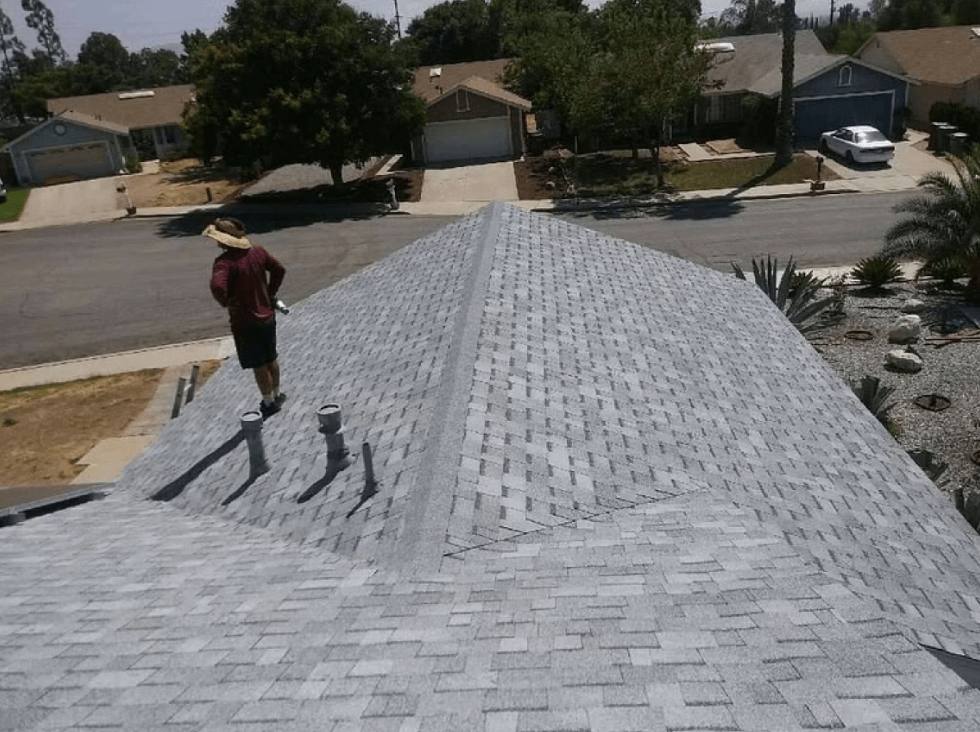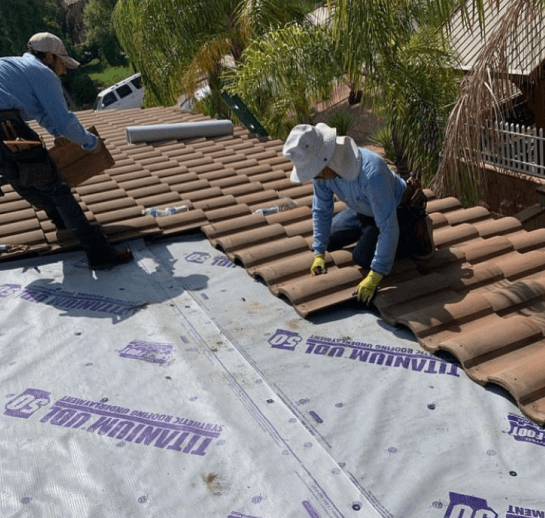Understanding Roof Warranties: What’s Covered and What's Not
Daniel Lee • Sep 09, 2024
A roof warranty can be a crucial aspect of your roofing system, offering peace of mind and protection against potential issues. However, not all warranties are created equal, and understanding what’s covered and what isn’t can help you make an informed decision when selecting a roofing product or contractor. Here’s a comprehensive guide to help you navigate roof warranties and understand their coverage.
1. Types of Roof Warranties
Roof warranties typically fall into two main categories: manufacturer’s warranties and contractor’s warranties. Each type serves a different purpose and covers different aspects of your roofing system.
Manufacturer’s Warranty: This warranty is provided by the company that manufactures the roofing materials. It typically covers defects in the materials themselves.
Contractor’s Warranty: This is offered by the roofing contractor who installs the roof. It usually covers issues related to the installation process, such as workmanship errors.
2. What’s Covered
Manufacturer’s Warranties
Material Defects: This warranty usually covers defects in the roofing materials, such as premature deterioration, manufacturing flaws, or issues with the product’s performance.
Longevity: Many manufacturer’s warranties specify the expected lifespan of the roofing materials, offering coverage for a certain number of years.
Contractor’s Warranties
Workmanship: This warranty generally covers issues arising from improper installation, including problems like leaks or loose shingles that result from installation errors.
Repair Costs: If installation issues occur, the contractor’s warranty may cover the cost of repairs or corrections needed to address the problem.
3. What’s Not Covered
Manufacturer’s Warranties
Improper Installation: Most manufacturer’s warranties do not cover issues resulting from improper installation or application of the roofing materials.
Routine Maintenance: Regular maintenance and inspections are typically not covered under the manufacturer’s warranty. Homeowners are responsible for routine upkeep to ensure the roof remains in good condition.
External Damage: Damage caused by external factors such as severe weather, vandalism, or accidents is usually not covered by the manufacturer’s warranty.
Contractor’s Warranties
Material Defects: Contractor warranties generally do not cover defects in the roofing materials themselves; this is typically covered by the manufacturer’s warranty.
Wear and Tear: Normal wear and tear due to aging or environmental factors are usually not covered by the contractor’s warranty.
Neglect or Abuse: Damage resulting from neglect, improper maintenance, or misuse is generally excluded from coverage under the contractor’s warranty.
4. How to Maximize Your Warranty Coverage
Understand the Terms: Carefully review the terms and conditions of both the manufacturer’s and contractor’s warranties. Knowing what is and isn’t covered will help you avoid surprises and ensure you’re aware of your rights and responsibilities.
Keep Records: Maintain detailed records of your roofing installation, including receipts, warranties, and any correspondence with the contractor or manufacturer. This documentation can be valuable if you need to make a warranty claim.
Schedule Regular Maintenance: Regular maintenance can help ensure that your roof remains in good condition and that you don’t inadvertently void your warranty. Follow the manufacturer’s guidelines for care and upkeep.
Choose Reputable Contractors: Work with experienced, reputable contractors who adhere to proper installation practices. This can help prevent issues that might not be covered by either type of warranty.
5. Making a Warranty Claim
If you encounter issues that you believe are covered by your warranty, follow these steps to make a claim:
Contact the Contractor or Manufacturer: Reach out to the appropriate party based on the type of issue—contractor or manufacturer.
Provide Documentation: Submit any required documentation, such as proof of purchase, installation records, and details of the issue.
Follow Procedures: Adhere to any specific procedures outlined in the warranty for filing a claim. This may include deadlines, required inspections, or other steps.
Conclusion
Understanding the intricacies of roof warranties is essential for ensuring you have the protection you need and for managing any potential issues that may arise. By knowing what’s covered, what’s not, and how to maximize and utilize your warranty effectively, you can safeguard your investment and maintain the integrity of your roofing system. Whether dealing with material defects or installation issues, a clear understanding of your warranty will provide valuable peace of mind.

By Daniel Lee
•
09 Sep, 2024
A roof warranty can be a crucial aspect of your roofing system, offering peace of mind and protection against potential issues. However, not all warranties are created equal, and understanding what’s covered and what isn’t can help you make an informed decision when selecting a roofing product or contractor. Here’s a comprehensive guide to help you navigate roof warranties and understand their coverage. 1. Types of Roof Warranties Roof warranties typically fall into two main categories: manufacturer’s warranties and contractor’s warranties. Each type serves a different purpose and covers different aspects of your roofing system. Manufacturer’s Warranty: This warranty is provided by the company that manufactures the roofing materials. It typically covers defects in the materials themselves. Contractor’s Warranty: This is offered by the roofing contractor who installs the roof. It usually covers issues related to the installation process, such as workmanship errors. 2. What’s Covered Manufacturer’s Warranties Material Defects: This warranty usually covers defects in the roofing materials, such as premature deterioration, manufacturing flaws, or issues with the product’s performance. Longevity: Many manufacturer’s warranties specify the expected lifespan of the roofing materials, offering coverage for a certain number of years. Contractor’s Warranties Workmanship: This warranty generally covers issues arising from improper installation, including problems like leaks or loose shingles that result from installation errors. Repair Costs: If installation issues occur, the contractor’s warranty may cover the cost of repairs or corrections needed to address the problem. 3. What’s Not Covered Manufacturer’s Warranties Improper Installation: Most manufacturer’s warranties do not cover issues resulting from improper installation or application of the roofing materials. Routine Maintenance: Regular maintenance and inspections are typically not covered under the manufacturer’s warranty. Homeowners are responsible for routine upkeep to ensure the roof remains in good condition. External Damage: Damage caused by external factors such as severe weather, vandalism, or accidents is usually not covered by the manufacturer’s warranty. Contractor’s Warranties Material Defects: Contractor warranties generally do not cover defects in the roofing materials themselves; this is typically covered by the manufacturer’s warranty. Wear and Tear: Normal wear and tear due to aging or environmental factors are usually not covered by the contractor’s warranty. Neglect or Abuse: Damage resulting from neglect, improper maintenance, or misuse is generally excluded from coverage under the contractor’s warranty. 4. How to Maximize Your Warranty Coverage Understand the Terms: Carefully review the terms and conditions of both the manufacturer’s and contractor’s warranties. Knowing what is and isn’t covered will help you avoid surprises and ensure you’re aware of your rights and responsibilities. Keep Records: Maintain detailed records of your roofing installation, including receipts, warranties, and any correspondence with the contractor or manufacturer. This documentation can be valuable if you need to make a warranty claim. Schedule Regular Maintenance: Regular maintenance can help ensure that your roof remains in good condition and that you don’t inadvertently void your warranty. Follow the manufacturer’s guidelines for care and upkeep. Choose Reputable Contractors: Work with experienced, reputable contractors who adhere to proper installation practices. This can help prevent issues that might not be covered by either type of warranty. 5. Making a Warranty Claim If you encounter issues that you believe are covered by your warranty, follow these steps to make a claim: Contact the Contractor or Manufacturer: Reach out to the appropriate party based on the type of issue—contractor or manufacturer. Provide Documentation: Submit any required documentation, such as proof of purchase, installation records, and details of the issue. Follow Procedures: Adhere to any specific procedures outlined in the warranty for filing a claim. This may include deadlines, required inspections, or other steps. Conclusion Understanding the intricacies of roof warranties is essential for ensuring you have the protection you need and for managing any potential issues that may arise. By knowing what’s covered, what’s not, and how to maximize and utilize your warranty effectively, you can safeguard your investment and maintain the integrity of your roofing system. Whether dealing with material defects or installation issues, a clear understanding of your warranty will provide valuable peace of mind.
COMPANY INFO
El Cerrito Roofing Pros
El Cerrito, CA 94530
(510) 902-1673
QUICK LINKS
LET'S WORK TOGETHER!
Welcome to El Cerrito Roofing Pros, your trusted local experts for all roofing needs in Contra Costa County and the Bay Area. As a family-owned business with a stellar reputation, we specialize in repair, installation, and maintenance for all types of roofs. Our professional team is dedicated to delivering exceptional customer service, handling every project with care and respect. From personalized consultations to high-quality results, we ensure a seamless experience at competitive prices. Contact us today to start your roofing journey.
